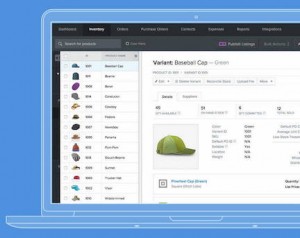Pivoting to a new career or industry can be a daunting prospect. But knowing how to rebrand yourself and create a new and powerful personal brand can make this process a whole lot easier.
And that’s just what I want to share with you today. Below I have collected 8 tactics that will help you to rebrand yourself for whatever new career awaits.
How to Rebrand Yourself in a New Career
1. Tap Into Social Media
When it comes to personal branding and career change, there’s no better place to start than social media.
Use social media to learn as much as you can about your new career. Follow industry thought leaders, read their content, and join as many industry groups and discussions as you can.
And don’t forget to engage on social media. Comment on posts, share relevant content, attend any live industry events that are hosted on social media.
These steps will help you to network with others in the industry and start to build an audience for your personal brand.
2. Assess Your Skills
You’ve had years in your current role, and no doubt you’ve acquired valuable skills along the way. Some find it hard to believe that they have valuable skills that would transfer to a new career — but I have no doubt that you do!
Dig a little deeper into your skillset and you’ll find plenty of valuable abilities and knowledge that make you a top candidate. It might be technical knowledge and expertise that relates to your new field. It could also be such skills as diplomacy, problem-solving, and management experience that set you apart.
Whatever the case, take the time to carefully analyze your skills to see what will transfer over to your new career. Write them down and keep track of them as you rebrand yourself in your career.
3. Understand Your New Career
When entering a new career, you need to understand the nuances involved, including the jargon that people in that industry use.
This would include…
- Job titles
- Technical terms
- Skills needed
- How the industry works
Knowing this ahead of time will help you to mitigate any confusion or fear of seeming ignorant in your prospective career.
Do your research. Comb through industry magazines and materials that will catch you up on all the industry terminology you need. Use that information to update your LinkedIn profile and resume to better represent your personal brand in your new career path.
4. Get Published
Content is the number one way to show people that you know your stuff — that you deserve your place in the industry.
Start small by writing short articles. If you don’t have your own blog, LinkedIn’s publishing platform is a great and easy way to get started — you can even use LinkedIn’s poll feature to find out what piques people’s interest the most!
As you continue to publish articles, look for topics where you can dig a little deeper and create longer form content. Longer content will help to feed your audience’s hunger for knowledge and establish your expertise.
5. Become an Expert Guest
As you rebrand yourself and continue to grow in your new career, becoming an expert guest can help. This could mean writing a guest post on an industry blog or speaking as an expert guest on a relevant podcast.
This should be done strategically. Look for guest opportunities that will expose your personal brand to your target audience. Research industry blogs to see the topics that they feature and how they promote guest content on social media. This will tell you the kind of exposure you can expect.
Don’t be afraid to guest on 2nd or 3rd tier blogs and podcasts. While these might not have the same name recognition as top tier platforms, they may have the loyal audience and engagement that are most important.
6. Learn About Your Audience
A good knowledge of your audience allows you to better fill their needs. And this doesn’t have to be a social media audience. This could be the hiring manager at a prospective job.
Whatever the case, do your research ahead of time. Learn what your audience’s needs are and what they want from you. You have many accomplishments that could interest your audience. But if you don’t know what their interests are, you risk going off on an unrelated subject and their mentally checking out.
How can you know what matters to them? Quite simply, ask. For example, during an interview, you will have the opportunity to ask questions. You could ask something like, “What challenges does the company face?” Once you know, you can then talk about an experience of yours that shows how you met a similar challenge — in other words, how you would be valuable to the company.
7. Advocate for Your Career Change
You are rebranding yourself, creating a new personal brand. Especially if you plan on new personal branding after 50+, some people will no doubt ask you why you’ve chosen to change careers and what qualifications you have for your new career.
The fact is, you put a lot of time and energy into your new career. You studied it, thought carefully about it, and landed on a career that you are passionate about.
This gives you the upper hand.
When someone such as a hiring manager asks you why you’ve chosen this career at this time, be prepared to talk about what went into your decision-making process. Let the manager see that you have made this decision, not on a whim, but carefully and methodically.
8. Expand Your Network
People who are changing from a career that they’ve had for a long time tend to run into one main problem: People pigeon-hole them. They find it hard to imagine that person in a new role.
Perhaps this has happened to you. If it has, expanding your network may help!
Add people to your inner circle who haven’t known you in one single role and who don’t have to be convinced of your new path. This takes some of the pressure off and allows you to get comfortable in your new role.
When you rebrand yourself and enter into a new career or industry, i’s is a big step. I hope these tactics help you to be as prepared as possible for this next step in your reinvention journey.
Business & Finance Articles on Business 2 Community
(47)
Report Post





